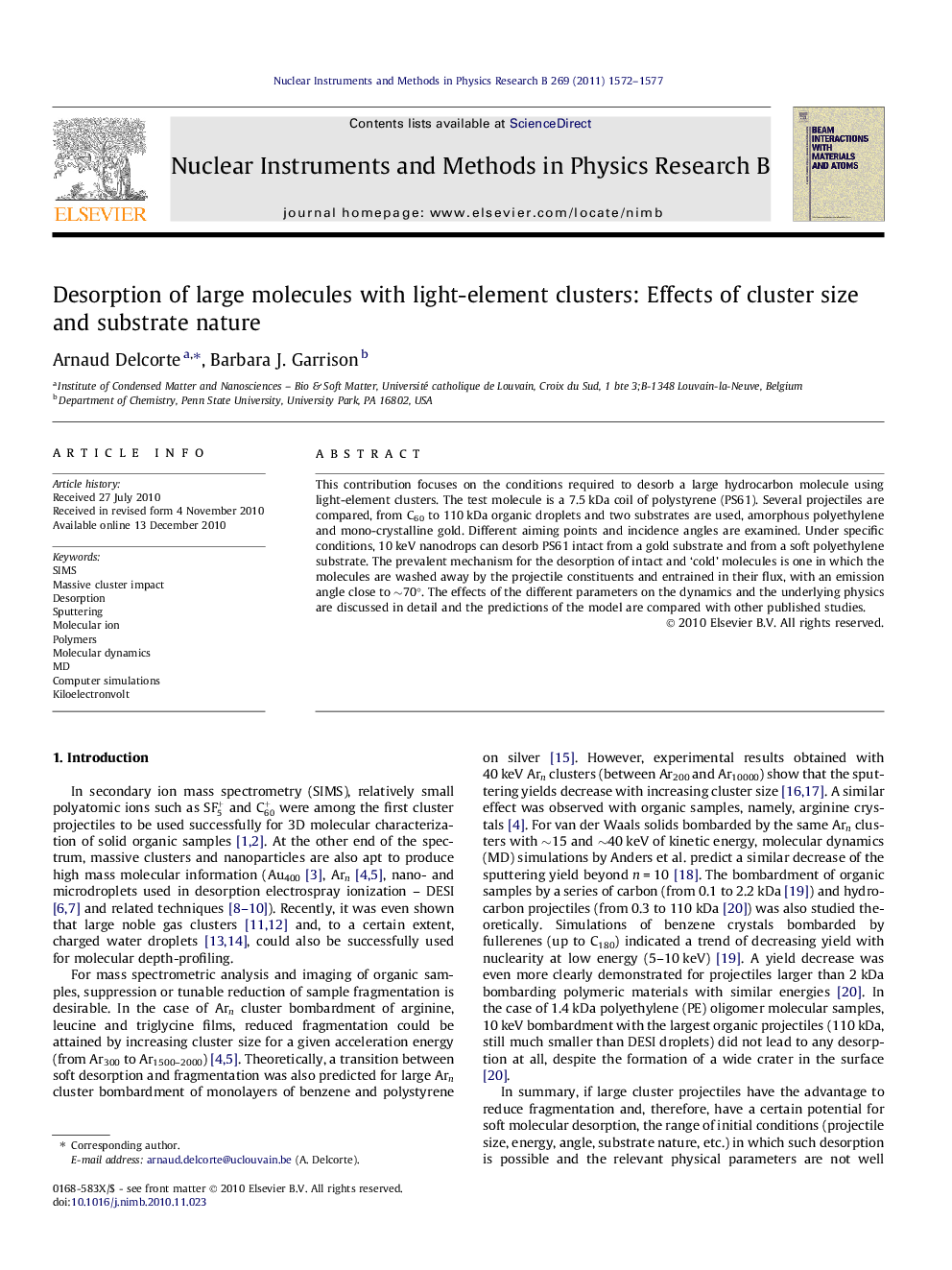| Article ID | Journal | Published Year | Pages | File Type |
|---|---|---|---|---|
| 10674851 | Nuclear Instruments and Methods in Physics Research Section B: Beam Interactions with Materials and Atoms | 2011 | 6 Pages |
Abstract
This contribution focuses on the conditions required to desorb a large hydrocarbon molecule using light-element clusters. The test molecule is a 7.5 kDa coil of polystyrene (PS61). Several projectiles are compared, from C60 to 110 kDa organic droplets and two substrates are used, amorphous polyethylene and mono-crystalline gold. Different aiming points and incidence angles are examined. Under specific conditions, 10 keV nanodrops can desorb PS61 intact from a gold substrate and from a soft polyethylene substrate. The prevalent mechanism for the desorption of intact and 'cold' molecules is one in which the molecules are washed away by the projectile constituents and entrained in their flux, with an emission angle close to â¼70°. The effects of the different parameters on the dynamics and the underlying physics are discussed in detail and the predictions of the model are compared with other published studies.
Related Topics
Physical Sciences and Engineering
Materials Science
Surfaces, Coatings and Films
Authors
Arnaud Delcorte, Barbara J. Garrison,
